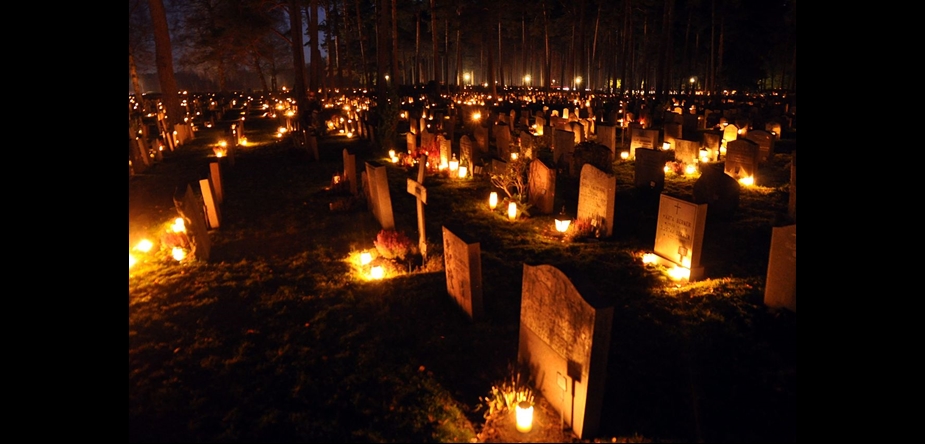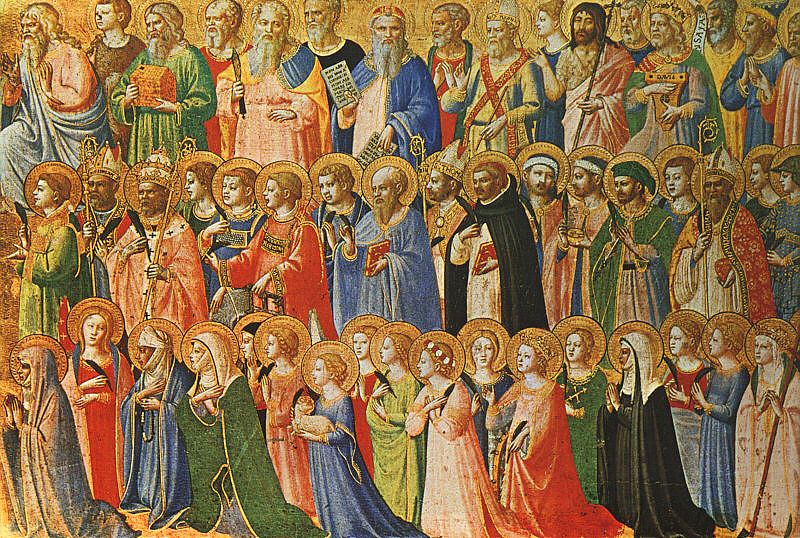All Souls’ Day is a day of prayer for the dead, particularly but not exclusively one’s relatives. In Western Christianity the annual celebration is now held on 2 November and is associated with All Saints’ Day (1 November) and its vigil, Halloween (31 October). In the liturgical books of the western Catholic Church (the Latin Church) it is called The Commemoration of All the Faithful Departed, and is celebrated annually on 2 November, even if this date falls on a Sunday.[3] In Anglicanism it is called Commemoration of All Faithful Departed and is an optional celebration. In the Eastern Orthodox Church and the associated Eastern Catholic Churches, it is celebrated several times during the year and is not associated with the month of November.
Beliefs and practices associated with All Souls’ Day vary widely among Christian churches and denominations.
Origins, practices and purposes
Some believe that the origins of All Souls’ Day in European folklore and folk belief are related to customs of ancestor veneration practised worldwide, through events such as the Chinese Ghost Festival, the Japanese Bon Festival. The Roman custom was that of the Lemuria.
The formal commemoration of the saints and martyrs (All Saints’ Day) existed in the early Christian church since its legalization, and alongside that developed a day for commemoration of all the dead (All Souls’ Day). The modern date of All Souls’ Day was first popularized in the early eleventh century after Abbot Odilo established it as a day for the monks of Cluny and associated monasteries to pray for the souls in purgatory. However, it was only much later in the Medieval period, when Europeans began to mix the two celebrations, that many traditions now associated with All Souls’ Day are first recorded.
Many of these European traditions reflect the dogma of purgatory. For example, ringing bells for the dead was believed to comfort them in their cleansing there, while the sharing of soul cakes with the poor helped to buy the dead a bit of respite from the suffering of purgatory. In the same way, lighting candles was meant to kindle a light for the dead souls languishing in the darkness. Out of this grew the traditions of “going souling” and the baking of special types of bread or cakes.
In Tirol, cakes are left for them on the table and the room kept warm for their comfort. In Brittany, people flock to the cemeteries at nightfall to kneel, bareheaded, at the graves of their loved ones, and to anoint the hollow of the tombstone with holy water or to pour libations of milk on it. At bedtime, the supper is left on the table for the souls.
In Bolivia, many people believe that the dead eat the food that is left out for them. In Brazil people attend a Mass or visit the cemetery taking flowers to decorate their relatives’ grave, but no food is involved.
In Malta many people make pilgrimages to graveyards, not just to visit the graves of their dead relatives, but to experience the special day in all its significance. Visits are not restricted to this day alone. During the month of November, Malta’s cemeteries are frequented by families of the departed. Mass is also said throughout the month, with certain Catholic parishes organising special events at cemetery chapels.



 All Saints’ Day
All Saints’ Day